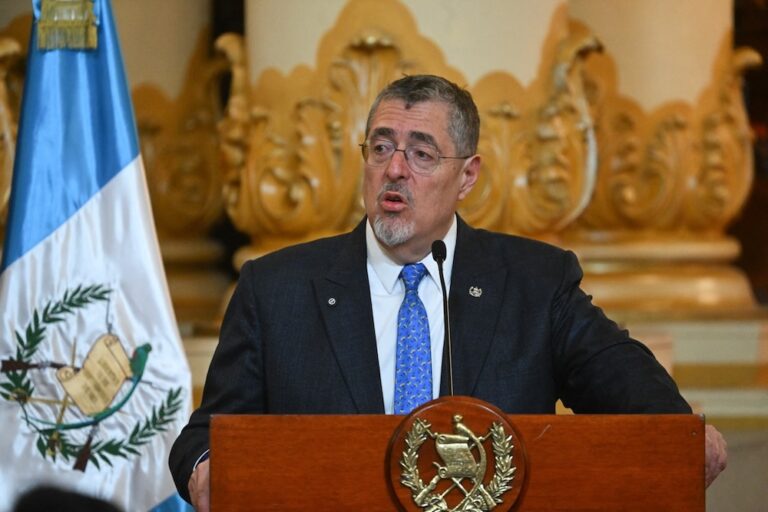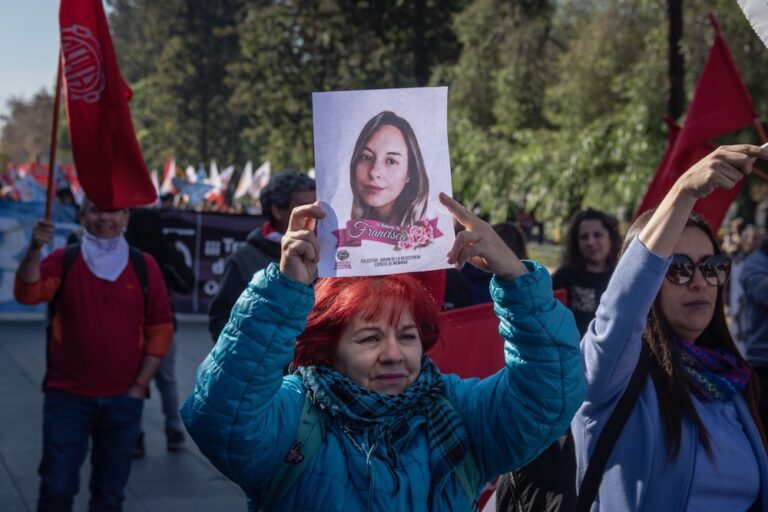(CERIGUA/IFEX) – Between 1 January and 31 July 2005, 31 journalists were victims of violent attacks, including a radio station operator outside of the capital who was murdered, according to a study on the state of freedom of expression in the country (“Estado de Situación de la Libertad de Expresión 2005), published by CERIGUA’s Observatory […]
(CERIGUA/IFEX) – Between 1 January and 31 July 2005, 31 journalists were victims of violent attacks, including a radio station operator outside of the capital who was murdered, according to a study on the state of freedom of expression in the country (“Estado de Situación de la Libertad de Expresión 2005), published by CERIGUA’s Observatory on Journalists on 31 August. This brings the total number of violent attacks on journalists since 1 January 2003 to 150, three of which resulted in the deaths of the journalists.
With eight cases, the capital, Guatemala City, was the setting for the highest number of attacks in 2005, followed by the regional departments of Huehuetenango, Chiquimula, Zacapa, Sololá, Retalhuleu, Jalapa, Escuintla, San Marcos, Jutiapa, Totonicapán and Baja Verapaz.
The majority of this year’s attacks were in response to journalists’ attempts to obtain information from government institutions and courts, or to cover protests and demonstrations by social groups or former members of the “Civil Self-defence Patrols” (Patrullas de Autodefensa Civil, PAC, paramilitary anti-insurgency groups organised by the Guatemalan military during the civil war in the 1980s). During the protests by social organisations, those responsible for the attacks on the journalists were most frequently members of the police force, whereas during demonstrations by the ex-PAC members, the attacks were perpetrated by the demonstrators themselves.
According to the Observatory, February, with 8 attacks reported to CERIGUA, was the most violent month for journalists, followed by March (5), June (5), May (3), January (2), and April and July with 1 each.
In 76 percent of the cases, the journalists were able to identify their assailants, which included members of the national police force (Policía Nacional Civil), former paramilitary group members, public officials and people being tried for crimes. In the remaining 24 percent of cases, the assailant was not identified.
According to the Observatory, in the same period, the Office of the Special Prosecutor for Crimes against Journalists (Fiscalía Especial de Delitos contra Periodistas) documented six other cases that had not been reported to CERIGUA, bringing the total number of documented attacks to 31.
The study identifies “parallel groups” (irregular armed groups of, for example, ex-PAC members or ex-military), organised crime and drug traffickers as those responsible for many of the threats, acts of intimidation and murders.
Copies of the report may be requested by e-mailing to: observatorioperiodistas@cerigua.org or informacion@cerigua.org


